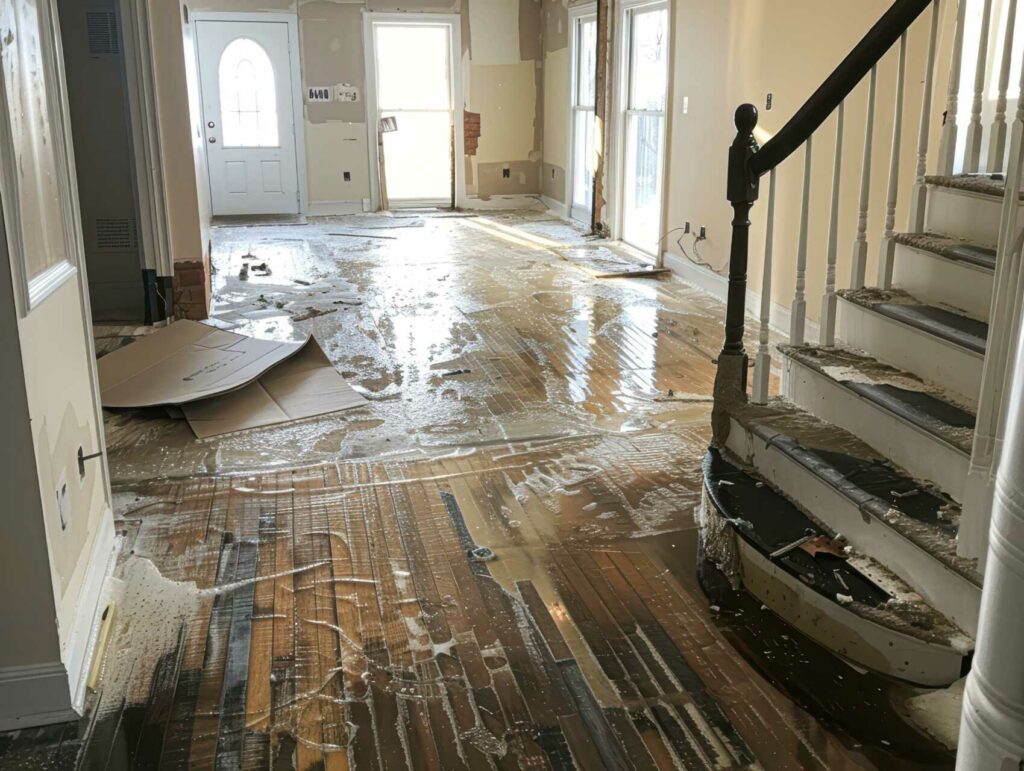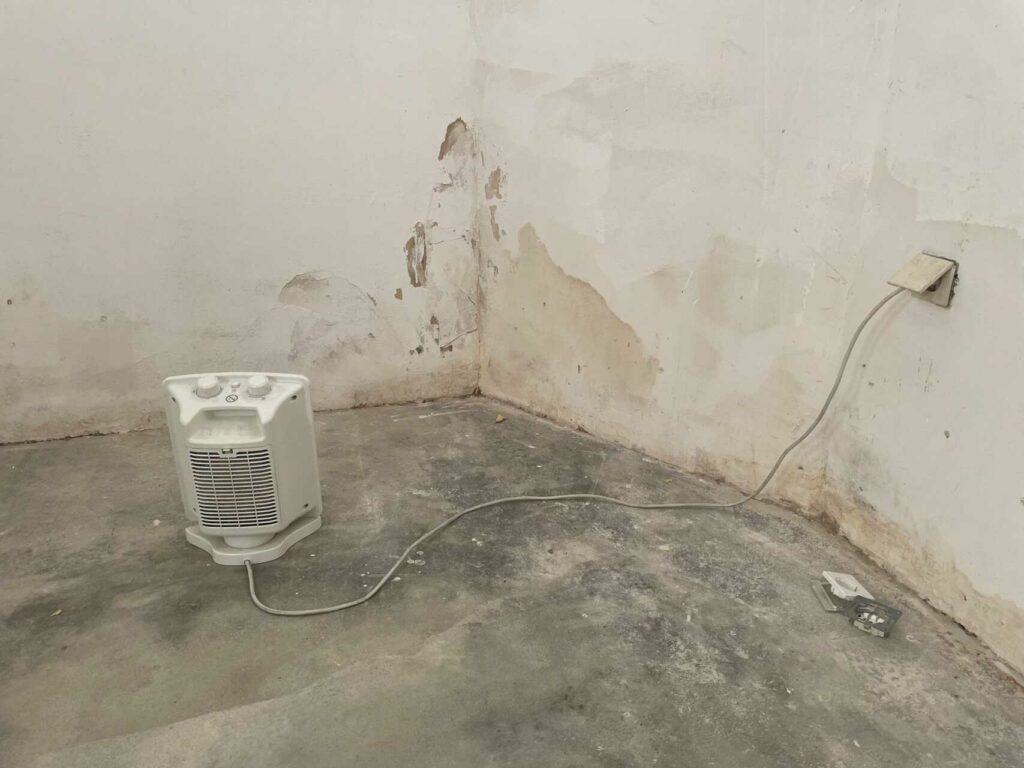Contents
If you’ve ever wondered about the key to maintaining a healthy indoor environment, explore the role of your home’s insulation. It acts as a silent guardian, quietly working to enhance the air quality you breathe daily. But how exactly does insulation accomplish this important task? Stay tuned to discover the intricate connection between home insulation and the air you breathe and why disregarding this aspect of your living space could have significant consequences on your well-being.
Key Takeaways
- Maintains consistent indoor temperatures for comfort.
- Reduces entry of outdoor pollutants for cleaner air.
- Minimizes allergens like dust mites and mold.
- Enhances overall indoor air quality for health.
- Regulates indoor temperatures to prevent respiratory issues.
Importance of Indoor Air Quality
Ensuring excellent indoor air quality is essential for maintaining a healthy and comfortable living environment in your home. Two key aspects contributing to indoor air quality are air purification and allergy prevention.
Air purification involves the removal of contaminants from the air, such as dust, pollen, pet dander, and mold spores. These pollutants can exacerbate allergies and respiratory issues. By incorporating air purification systems into your home, you can effectively filter out these harmful particles, leading to cleaner and healthier air for you and your family.
Allergy prevention is another vital element when it comes to indoor air quality. Many individuals suffer from allergies triggered by common indoor allergens like dust mites or mold. Proper home insulation plays a significant role in reducing the presence of these allergens. Insulation helps to maintain consistent indoor temperatures, preventing mold growth and reducing the accumulation of dust mites.
additionally, a well-insulated home minimizes the entry of outdoor pollutants, further safeguarding against potential allergy triggers.
Health Benefits of Home Insulation
One key health benefit of home insulation is its ability to regulate indoor temperatures effectively, thereby reducing the risk of respiratory issues and improving overall well-being. Proper insulation helps maintain a consistent temperature inside your home, preventing extreme fluctuations that can trigger respiratory problems in sensitive individuals.
By creating a stable indoor environment, insulation minimizes the likelihood of asthma attacks, allergies, and other respiratory conditions.
Moreover, home insulation plays an important role in reducing allergens within your living space. Insulation helps seal off entry points for allergens like pollen, dust mites, and mold, which can exacerbate respiratory issues and cause discomfort.
By keeping these allergens at bay, insulation contributes to a healthier indoor environment, especially for those prone to allergies or asthma.
In addition to allergen reduction and temperature regulation, home insulation also enhances overall indoor air quality. By preventing outdoor pollutants from entering your home and reducing the circulation of indoor pollutants, insulation helps create a cleaner and healthier living environment.
This cleaner air quality can lead to fewer respiratory symptoms, improved sleep, and better overall health for you and your family.
Through the combined benefits of allergen reduction, temperature regulation, and enhanced air quality, home insulation plays a significant role in promoting respiratory health and well-being.
Energy Efficiency and Insulation
Improving energy efficiency through proper insulation is vital for reducing heat loss and lowering energy consumption in residential buildings. The benefits of insulation go beyond just maintaining indoor comfort; they also play a significant role in enhancing energy efficiency. By preventing heat transfer through walls, ceilings, and floors, insulation helps maintain a consistent indoor temperature, reducing the need for excessive heating or cooling. This results in lower energy bills and decreased environmental impact due to reduced energy consumption.
Insulation benefits not only your wallet but also your overall indoor comfort. Properly insulated homes are better equipped to maintain a stable indoor temperature, ensuring that you stay cozy during winter and cool during summer. Without adequate insulation, your HVAC system may have to work harder to compensate for heat loss or gain, leading to increased energy usage and potential discomfort.
Additionally, insulation helps in reducing drafts and cold spots within your home, creating a more pleasant living environment.
Types of Insulation Materials
To understand the effectiveness of home insulation for indoor air quality, it’s important to explore the various types of insulation materials available for residential use. When considering insulation materials, it’s essential to compare their effectiveness in providing thermal resistance and reducing heat transfer.
Common types of insulation materials include fiberglass, cellulose, foam board, and spray foam. Fiberglass insulation is a popular choice due to its affordability and ease of installation. It’s known for its good thermal resistance, but it can settle over time, reducing its effectiveness.
Cellulose insulation, made from recycled paper fibers, offers good thermal performance and is environmentally friendly. However, it may compact over time, affecting its insulation capabilities. Foam board insulation, including materials like expanded polystyrene (EPS) and extruded polystyrene (XPS), provides high insulation value and durability. These materials are resistant to moisture and offer long-term insulation benefits.
Spray foam insulation, available in open-cell and closed-cell forms, provides excellent thermal resistance and air-sealing properties. It’s a versatile option that can conform to irregular spaces, but it’s more costly than other insulation materials.
When selecting an insulation material, consider factors such as insulation comparison, durability, and cost to ensure ideal indoor air quality and energy efficiency in your home.
Proper Insulation Installation Techniques
When installing insulation in your home, it’s essential to contemplate the type of material used to guarantee top performance. Proper installation techniques enhance energy efficiency and contribute to improving indoor air quality.
Understanding the benefits of different insulation materials can help you make well-informed decisions to create a healthier and more comfortable living environment.
Insulation Materials Overview
Selecting the appropriate insulation materials is essential to ensuring the effectiveness and longevity of your home’s insulation system. When considering insulation types, it’s important to compare materials based on factors such as R-value, cost, and environmental impact.
Common insulation materials include fiberglass, cellulose, spray foam, and mineral wool. Fiberglass insulation is cost-effective and easy to install but may require careful handling due to its potential for skin irritation. Cellulose insulation, made from recycled paper, offers good thermal performance and is eco-friendly. Spray foam insulation provides an excellent air barrier and high R-value but can be more expensive. Mineral wool, a versatile material, is moisture-resistant and provides excellent sound absorption.
Conducting a thorough material comparison will help you determine the most suitable option for your home’s insulation needs, ensuring excellent indoor air quality and energy efficiency. Proper installation techniques for these materials are essential to maximize their effectiveness and maintain a healthy living environment.
Energy Efficiency Benefits
Compare and evaluate proper insulation installation techniques to maximize energy efficiency benefits in your home. Insulation effectiveness plays a vital role in achieving significant energy savings. Proper installation techniques guarantee that there are no gaps, compression, or voids in the insulation material, which can reduce its effectiveness. By sealing all air leaks and using the right insulation type for each area of your home, you can enhance insulation effectiveness and improve energy efficiency. This results in reduced energy consumption and lower utility bills, leading to cost reduction in the long run.
In addition to energy savings, proper insulation installation techniques also contribute to indoor comfort. By maintaining consistent indoor temperatures throughout your home, you can create a more comfortable living environment for you and your family. This enhances your quality of life and reduces the strain on your heating and cooling systems, extending their lifespan.
Air Quality Improvement
To improve indoor air quality through proper insulation installation techniques, make sure that there are no gaps, compression, or voids in the insulation material. Gaps can lead to air leakage, allowing pollutants to enter your home. Properly installed insulation acts as a barrier, preventing allergens and contaminants from infiltrating your living spaces.
Additionally, consider integrating air purification systems and ventilation solutions to enhance air quality further. These mechanisms work in conjunction with insulation to guarantee a continuous flow of clean air while trapping harmful particles.
Incorporating mold prevention and moisture control strategies is essential when addressing air quality concerns. Mold thrives in damp environments, posing serious health risks. By installing insulation correctly and addressing any moisture issues promptly, you can mitigate the growth of mold and protect your household’s well-being.
Proper insulation placement coupled with effective ventilation enhances air quality and creates a healthier and more comfortable living environment for you and your family.
Cost-Effective Insulation Solutions
When choosing cost-effective insulation solutions for your home, consider energy-saving options that can help reduce your utility bills.
Look into eco-friendly insulation materials that benefit the environment and improve indoor air quality.
Investing in long-term cost benefits through effective insulation solutions can lead to significant savings over time.
Energy-Saving Insulation Options
Consider exploring energy-saving insulation options that offer cost-effective solutions for improving the efficiency of your home’s insulation system. Retrofit options are a great way to enhance your existing insulation without needing a full replacement. By adding additional insulation to areas like attics, walls, and floors, you can create a more important thermal barrier that helps regulate indoor temperatures and reduce energy waste.
Thermal barriers play a vital role in preventing heat transfer between the interior and exterior of your home. Upgrading to energy-saving insulation materials such as spray foam, cellulose, or fiberglass can greatly enhance the thermal performance of your home. These materials provide better resistance to heat flow, helping to maintain a comfortable indoor environment while lowering your heating and cooling costs.
Investing in energy-saving insulation options improves your home’s energy efficiency and contributes to a healthier indoor environment by reducing the strain on your HVAC system and promoting better air quality.
Explore these solutions to create a more enduring and cost-effective insulation system for your home.
Eco-Friendly Insulation Materials
Exploring eco-friendly insulation materials presents a cost-effective approach to enhancing the sustainability and efficiency of your home’s insulation system. By opting for eco-conscious options and eco-friendly alternatives, you contribute to a healthier environment and create a more comfortable living space. Let’s investigate some of the top choices for environmentally friendly insulation materials:
| Material | Description | Benefits |
|---|---|---|
| Recycled Denim | Made from recycled jeans, cotton | Non-toxic, excellent sound absorption |
| Sheep’s Wool | Natural, renewable, biodegradable | Fire-resistant, moisture-wicking |
| Cork Insulation | Harvested from bark, renewable | Water-resistant, insect repellent |
| Cellulose Insulation | Made from recycled paper | Energy-efficient, mold and pest resistant |
These materials not only provide effective insulation but also align with eco-conscious values. Consider these environmentally friendly options to enhance your home’s insulation system while reducing your carbon footprint.
Long-Term Cost Benefits
Investing in cost-effective insulation solutions for your home can yield significant long-term financial benefits. By choosing insulation materials that provide excellent thermal resistance, cost savings, and longevity benefits, you can make a wise investment in your property.
Cost savings are achieved through reduced energy consumption for heating and cooling purposes. Proper insulation helps maintain consistent indoor temperatures, reducing the workload on your HVAC system and lowering your utility bills.
Additionally, cost-effective insulation solutions often have a longer lifespan, reducing the need for frequent replacements or repairs, further saving you money in the long run. The initial investment in high-quality insulation pays off over time as you enjoy decreased energy costs and fewer maintenance expenses.
Review
The significance of home insulation for indoor air quality can’t be overstated. By investing in quality insulation, you are enhancing the comfort and well-being of your home and improving the overall health of its occupants.
Proper insulation helps regulate indoor temperatures, reducing the entry of pollutants and removing contaminants, ultimately creating a healthier living environment for you and your loved ones.




